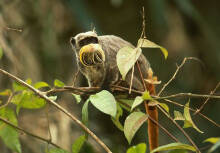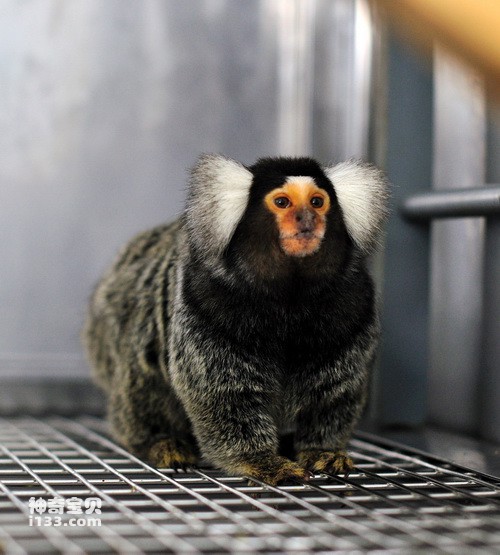
The black-and-white tamarin (scientific name: Saguinus bicolor) is also known as the Brazilian Bare-faced Tamarin. It is an endangered primate.The black-and-white tamarin lives in small groups, with about 2-15 members in a group. In the Yadovduk Forest Reserve, there are an average of 4-8 black-and-...

The scientific name of the golden-bearded tamarin is Saguinus tripartitus. It lives in trees and groups. It forages during the day and rests in tree holes at night. It is omnivorous, with fruits as its main food. It also eats insects, nectar and plant juices, and occasionally eats small vertebrates....

Red-cap Moustached Tamarin, scientific name Saguinus pileatus, foreign name Red-cap Moustached Tamarin, eats fruits, nuts and other plant foods, also eats insects, spiders, frogs, small lizards and bird eggs. It has sharp vision, followed by hearing and smell. It is active during the day and lives i...

Cotton-headed Tamarin (scientific name: Saguinus oedipus) is also known as Cotton-headed Tamarin in English. It is about the same size as a marmoset.The food types and lifestyle of the cashmere-top tamarin are similar to those of ordinary marmosets. They mainly live on the edge of tropical forests,...

Emperor Tamarin (scientific name: Saguinus imperator) is also known as Emperor Tamarin in English. It has two subspecies.The emperor tamarin has sharp vision, but poor hearing and smell. It lives in the upper canopy of the rainforest almost all its life and rarely moves on the ground, because food c...

If you have watched the movie "Rio", you will definitely have an impression of the army of monkey thieves in it: the monkey uses the stolen gold watch as a belt to pretend to be rich. This scene graphically illustrates the size of the marmoset. The homeland of marmosets is the forests of nort...